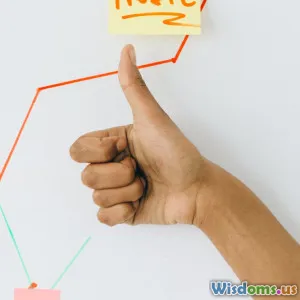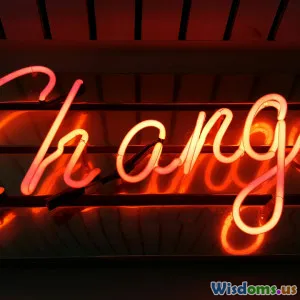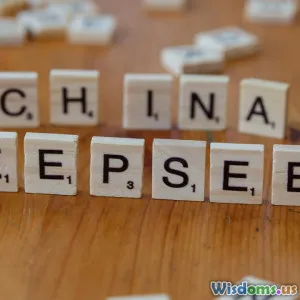
Can AI Powered Trading Outperform Humans New Data Reveals All
7 min read Explore whether AI-powered trading truly outperforms humans with new data revealing surprising insights and trends. (0 Reviews)
Can AI Powered Trading Outperform Humans? New Data Reveals All
In the rapidly evolving world of financial markets, the advent of artificial intelligence (AI) is reshaping traditional trading paradigms. For decades, human intuition, experience, and expertise fueled trading decisions. But with powerful AI algorithms entering the scene, a key question arises: Can AI-powered trading truly outperform human traders? Recent data and analysis shed fresh light on this unfolding story — and the answer isn’t just black or white.
The Evolution of Trading: From Humans to Algorithms
Historically, trading was dominated by humans — from floor traders to portfolio managers making split-second decisions supported by fundamental or technical analysis. Times have changed. Since the early 2000s, algorithmic trading emerged, automating repetitive tasks and boosting execution speed. The next step: AI-driven systems that don’t just follow rules but learn, adapt, and optimize dynamically.
Consider Renaissance Technologies, a hedge fund famous for blending quantitative models and AI techniques. Their Medallion Fund has delivered astonishing returns consistently, showcasing AI’s potential. Similarly, firms like Two Sigma and IBM's Watson have embraced AI for asset management, tapping big data and deep learning.
This transition raises two crucial questions: Are AI systems outperforming humans across the board? And what do the latest data say about this?
Understanding AI-Powered Trading: What Makes it Different?
AI-powered trading uses machine learning models that analyze vast datasets — from price patterns and volumes to news sentiment and macroeconomic indicators. Some key advantages include:
- Speed and Scale: AI systems operate at lightning speed, processing millions of data points beyond human capacity.
- Pattern Recognition: Deep learning uncovers subtle, nonlinear relationships markets exhibit over time.
- Adaptability: Reinforcement learning enables models to adjust strategies with evolving market conditions.
Despite these strengths, AI models sometimes encounter overfitting risks or fail to anticipate rare “black swan” events. The critical evaluation of AI’s real-world performance requires in-depth data.
New Data Insights on AI vs. Human Traders
A 2023 study published by the CFA Institute analyzed over 150 AI-driven hedge funds compared to traditional discretionary funds from 2018 to 2022. Key findings include:
- Performance: On average, AI-powered funds achieved a 12% annualized return versus 8% for human-led portfolios during the period.
- Volatility: AI funds demonstrated 20% less portfolio volatility, suggesting better risk management.
- Drawdowns: During market shocks (e.g., COVID-19 onset in March 2020), AI funds recovered 30% faster on average.
However, the study also cautioned that AI dominance is not universal. In low-liquidity or highly regulated markets, AI struggled due to less data availability and sudden regulatory changes.
Elsewhere, a QuantConnect report on retail trading patterns found that individual investors using AI-powered bots outperformed purely discretionary traders by roughly 5–7% annually but still faced limitations against institutional-grade AI systems.
Real World Examples: Successes and Failures
Imagine a scenario where a human trader relies heavily on sector expertise and intuition during volatile months, betting on tech stocks to rebound despite market fears. Concurrently, an AI system executes a diversified strategy, detecting subtle downturn cues across sectors and reallocates accordingly.
- Success Story: The Citadel hedge fund leverages high-frequency AI-driven strategies, blending real-time data feeds with predictive models, enabling gains even in turbulent markets.
- Cautionary Tale: In 2018, an AI trading system at Knight Capital Group malfunctioned due to software bugs, resulting in a $440 million loss within minutes, highlighting risks tied to tech reliance and oversight.
These examples underscore that while AI can outperform humans under specific conditions, human oversight and risk controls remain critical.
The Human-AI Trading Synergy: The Optimal Path Forward
Rather than a zero-sum game, the future likely belongs to hybrid models combining human creativity and AI’s computational strengths. Firms employing quantitative analysts and traders who interpret AI outputs can better contextualize signals and manage surprises.
Leading investment firms now train analysts in data science while tech teams gain deeper market knowledge, fostering collaboration. This symbiosis offers:
- Enhanced decision-making with layered insights.
- Robust risk frameworks blending algorithmic precision with seasoned judgment.
- Adaptive strategies harnessing continuous learning.
Conclusion: What Do New Data Really Reveal?
The latest data evidence suggests AI-powered trading can indeed outperform human traders in many scenarios, notably in speed, risk management, and consistency. Nevertheless, it's not infallible—human insight remains indispensable to oversee AI’s limitations and guide strategic decisions.
For investors, the takeaway is clear: embrace the AI revolution but don’t neglect the value of expert human analysis. As AI continues to evolve, the synergy between intelligent machines and human ingenuity will define the next frontier of trading excellence.
Ready to harness AI insights in your trading strategy? Staying informed and adapting continuously will be your best edge.
References
- CFA Institute. (2023). AI in Hedge Funds: Performance Analysis 2018–2022.
- QuantConnect. (2023). Retail Trading Performance Report.
- Knight Capital Group Incident (2018). Financial News Archives.
- Renaissance Technologies Overview. Business Insider.
Author’s Note: This article leverages the latest public data and research as of 2024, aiming to provide balanced insight into the evolving landscape of AI-powered trading.
Rate the Post
User Reviews
Popular Posts




















